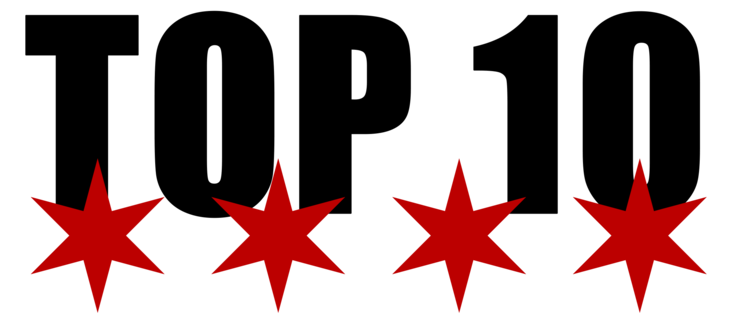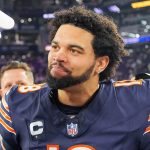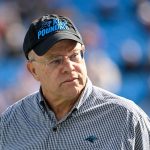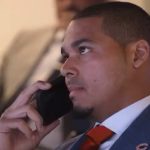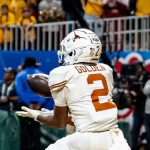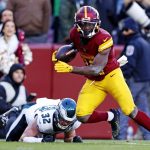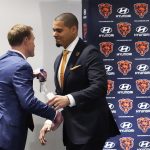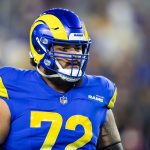Whether you choose to call it “tanking” or “rebuilding”, starting from scratch in the NBA can be a gruesomely slow process. Just ask the Philadelphia 76ers, Brooklyn Nets or Orlando Magic. With the offseason trade of All Star Jimmy Butler, the Chicago Bulls find themselves in a new but familiar situation. They’re starting another rebuild. Since the breakup of the ’90s dynasty, the Bulls have made just one conference finals appearance and zero trips to the Finals.
In 2010 the core of Derrick Rose, Joakim Noah and Luol Deng looked poised to be championship contenders for many years to come. But significant injuries to all three shut that championship window rather quickly. In 2015 Rose and his new sidekick Butler kept the Bulls relevant in Tom Thibodeau’s final season at the helm. They came just two wins shy of finally knocking off a LeBron James-led team in the conference semis. Two years, a new coach and a Rose trade later, the Bulls had just one playoff appearance as an 8th seed through the last legs of a doomed era. Butler was traded on draft night for a lottery pick and younger players with potential. Now, the next rebuild begins.
Bulls The Next Superteam?
Bulls fans are bracing for the worst, but at least one NBA guru believes there’s potential and hope for Chicago to make this rebuild a quick and successful one. ESPN’s Tom Haberstroh released a column this morning detailing nine teams that have the chance to become the league’s next superteam. He breaks them into subcategories based on the different ways teams can make the big jump from nobodies to contenders: the “2011 Heat model” (build through free agency), the “2008 Celtics model” (build using trade assets), and the “2014 Warriors model” (build through the draft). For each category, there is a most likely candidate, a runner-up and a dark horse.
And look what we have here. Haberstroh lists the Bulls as the dark horse candidate to become a superteam by building through free agency. Here’s the excerpt from his column:
The Bulls have essentially cleared the decks for the future. By trading Jimmy Butler and officially hitting the reset button on the Tom Thibodeau era, Chicago has only about $23 million in guaranteed contracts in 2018 and another $16.4 million in non-guaranteed money. Zach LaVine has a free agent cap hold at nearly $10 million, but the expectation here is they’ll wait on extension talks until they see his recovery from a torn ACL. That would be the smart move.
The Bulls should have $52 million in cap space next summer and a big-time market to lure free agents, but unlike L.A. and San Antonio, Chicago lacks a magnetic star like Kawhi or Lonzo. Maybe Kris Dunn, Lauri Markkanen or LaVine can prove us wrong, but we’re not betting on a star rising in Chicago anytime soon.
Luring Free Agents
Let’s break that down. When it comes to the Bulls’ cap space situation, Haberstroh’s numbers are accurate. For two years now, GM Gar Forman has constantly cited future cap flexibility as an undervalued asset for his team. While Chicago did overspend on veterans Rajon Rondo and Dwyane Wade in the free agent bonanza of 2016, Forman and his partner John Paxson always make sure to remind fans that both were brought in on short term deals. Rondo is already gone. Wade is still owed his $23.8 million, but a buyout or trade is possible sometime this season.
Beyond that, the Bulls are near the top of the list of teams with the most projected cap space entering the summers of 2018 and 2019. Sounds nice, right? The problem for the Bulls – which Haberstroh points out – is that there are more appealing teams with equal or higher cap space to lure those big name free agents in the coming summers. The Lakers play in an even bigger – not to mention warmer – market than Chicago and just drafted a potential star player in Lonzo Ball. The Spurs may not have Tim Duncan anymore, and Tony Parker is staring at his NBA mortality. But they still have Kawhi Leonard, arguably the best two-way player in the game right now. Oh, and Gregg Freaking Popovich.
When you compare those potential suitors to the Bulls’ collection of Fred Hoiberg, Kris Dunn, Zach LaVine and Lauri Markkanen…let’s just say Chicago doesn’t look like the clear winner.
Something else that deserves mention is the fact that despite the draw of playing in a big market city, the Bulls have repeatedly failed to land big name free agents in the GarPax era. They lost out on the trio of LeBron, Wade and Chris Bosh in 2010, settling instead for an overpaid Carlos Boozer. In 2014, Carmelo Anthony opted to stay with the lifeless Knicks rather than coming to Chicago and the Bulls settled for an aging Pau Gasol. Kevin Durant didn’t even so much as glimpse toward Chicago last summer.
What, if anything, has changed positively for the Bulls to end that trend next summer? GarPax might have the money to offer to guys like Russell Westbrook, Chris Paul, Paul George, DeMarcus Cousins and Isaiah Thomas in 2018. But will any of them actually want to play with this young core that the Bulls have thrown together? I say doubtful, at best.
The NBA, though, has proven to be wildly unpredictable in recent years. Never say never. Odds are slim, but at least there’s a road map for the Bulls to make this next rebuild the one that finally gets them back to championship contention. It likely won’t come through draft picks, and GarPax rarely find themselves on the winning side of trades. Free agency is their best chance. They’ll have the money. They better be working on their pitches as we speak.


